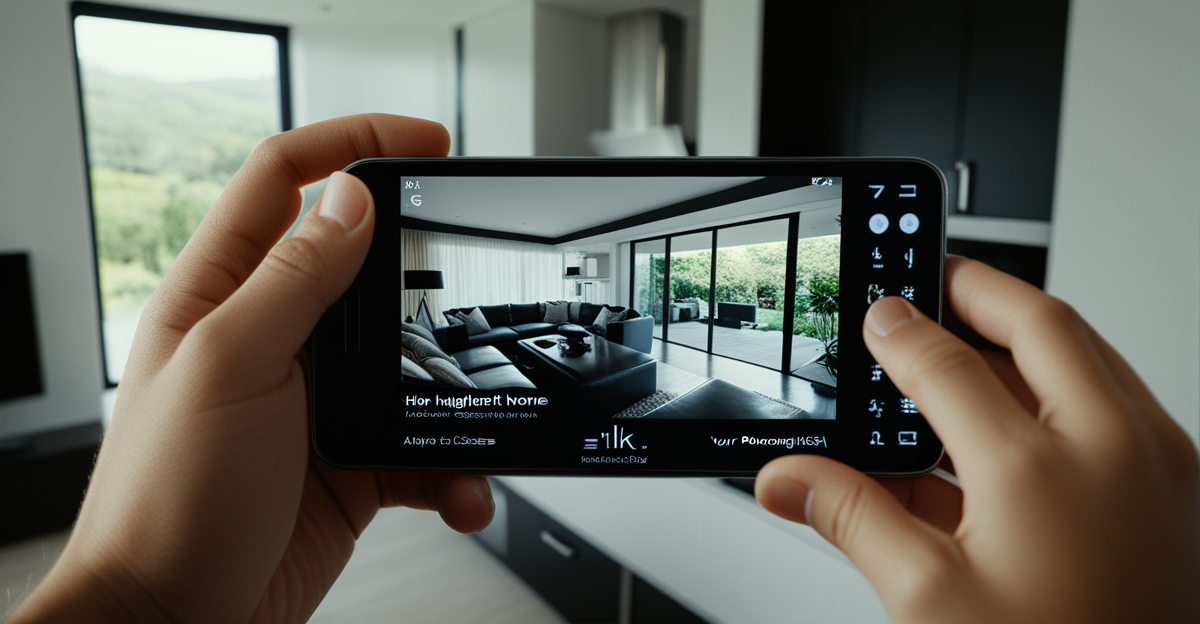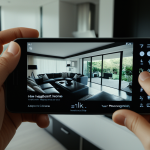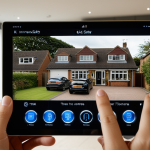The Role of Smart Technology in Modern Home Life
Smart home technology refers to the use of interconnected smart devices that automate and enhance everyday living. These devices, ranging from intelligent thermostats to voice-controlled assistants, communicate seamlessly to create a more efficient and responsive living environment. Home automation involves systems that control lighting, heating, security, and even entertainment, making homes adaptable to individual preferences.
Integration of smart devices is key; they work together to simplify tasks like adjusting temperatures or managing security alerts remotely. For example, a smart thermostat can communicate with smart lighting to create energy-efficient schedules tailored to your lifestyle. This networked approach reduces manual effort while boosting convenience.
This might interest you : How Can You Achieve a Cozy and Sustainable Home in the UK?
Home automation systems vary in complexity but generally provide centralized control through apps or voice commands. This integration not only improves daily comfort but also optimises energy use and enhances safety. The growing adoption of smart home technology reflects its expanding role in transforming how households function day to day, offering a seamless blend of innovation and practicality to modern living.
The Role of Smart Technology in Modern Home Life
Smart home technology refers to electronic systems and devices designed to automate and enhance daily living within a residential environment. This technology covers a broad scope, including smart devices such as connected thermostats, lighting systems, security cameras, and voice-activated assistants. These components work together to create an environment that is responsive to the user’s preferences.
Additional reading : How can you enhance your UK home’s security with smart technology?
The integration of smart devices for daily living enables homeowners to control multiple home functions from a single interface. For example, connected appliances can adjust settings automatically based on habits or environmental factors. This integration relies heavily on communication protocols that allow devices to interact seamlessly.
Home automation systems serve as the backbone of smart home technology by coordinating device behavior. These systems can execute pre-programmed routines or adapt dynamically, like adjusting heating when no one is home to save energy. Automation enables not only convenience but also increased efficiency, making homes smarter, safer, and more comfortable. Recognising the growing importance of such systems helps homeowners harness the full potential of smart technology in modern life.
Key Benefits of Smart Home Innovations
Smart home technology delivers significant benefits that enrich modern living. One of the most valued advantages is enhanced convenience. Through home automation, users can personalise control of devices like lighting and thermostats via apps or voice commands. This lets you adjust settings instantly—without physically interacting with multiple devices.
A major question is, how does home automation improve energy efficiency? Precision: It optimises usage by scheduling smart thermostats and lighting to operate only when needed, cutting unnecessary consumption. For example, smart thermostats learn your routine and adjust heating or cooling to save energy while maintaining comfort.
Security is another critical factor. How does smart home technology contribute to home safety? It enables remote monitoring and instant alerts for unusual activities via smart security systems. This proactive approach ensures peace of mind whether at home or away.
Together, these innovations boost convenience, reduce energy costs, and strengthen security. They ultimately improve quality of life by making daily management simpler and more efficient, catering to modern households’ evolving demands.
The Role of Smart Technology in Modern Home Life
Smart home technology encompasses a broad range of smart devices designed to automate and improve residential living. These devices, including thermostats, lighting systems, and security cameras, operate cohesively under a unified framework known as home automation. Home automation systems serve as the central hub, connecting smart devices to function in tandem and respond to user preferences efficiently.
The integration of smart devices enables users to control various home features from a single interface, often through mobile apps or voice commands. For example, a smart thermostat in a home automation setup adjusts temperature based on occupancy or time of day, reducing energy consumption while maintaining comfort. This precise interaction between devices highlights the importance of seamless integration in smart home technology.
Smart home technology extends beyond convenience; it provides automated responses to environmental changes, ensuring safer and more energy-efficient homes. Through effective home automation, smart devices not only simplify daily tasks but also optimize household operations, illustrating their vital role in modern home life.
The Role of Smart Technology in Modern Home Life
Smart home technology encompasses a wide array of smart devices designed to automate and streamline daily home functions. These devices range from intelligent thermostats to voice-controlled assistants, all connected through a network that enables communication and coordinated action. This integration allows homeowners to control lighting, climate, security, and entertainment from centralized platforms, enhancing convenience and efficiency.
At the core of this ecosystem is home automation, which manages device behavior automatically or via user input. Automation systems execute scheduled tasks—such as adjusting temperature or activating security cameras—or respond dynamically to environmental changes and user habits. For example, a smart thermostat can modulate heating based on occupancy, while smart lighting adjusts brightness depending on natural light levels.
Integrating smart devices for daily living not only simplifies routine tasks but also promotes energy savings and increased safety. The seamless interaction between devices through home automation transforms residences into adaptable, intelligent environments that cater to individual lifestyles while reducing manual effort. This advanced coordination is what makes smart home technology indispensable in modern households.
The Role of Smart Technology in Modern Home Life
Smart home technology represents a sophisticated network of smart devices designed to enhance residential living by automating routine tasks. These devices include thermostats, lighting controls, security cameras, and voice-activated assistants that work collectively through home automation systems. Home automation acts as the central platform, enabling these devices to communicate and execute coordinated actions based on user preferences or environmental changes.
Integration of smart devices is vital—it allows seamless control and synchronization between products. For example, a smart thermostat can interact with connected lighting to adjust settings dynamically when you enter or leave a room. This interplay not only boosts daily convenience but also improves energy use and security simultaneously.
Home automation systems typically offer centralized control through smartphone apps or voice commands, providing users with intuitive access to monitor and manage their homes remotely. This level of integration extends beyond convenience, making homes responsive, energy-efficient, and safer. By automating complex sequences, smart home technology transforms rigid environments into adaptable living spaces personalized to homeowner needs.
The Role of Smart Technology in Modern Home Life
Smart home technology involves a comprehensive system of smart devices working together to enhance residential living through advanced home automation. At its core, it automates and optimises everyday functions such as lighting, temperature control, and security. This coordination relies on networked devices that communicate via protocols like Wi-Fi, Zigbee, or Z-Wave, allowing seamless integration.
The scope of smart home technology extends beyond individual devices; it creates an ecosystem where devices interact intelligently. For example, smart thermostats adjust temperatures based on occupancy, while smart lighting tunes brightness according to natural light, all governed by home automation systems. These systems can execute pre-set schedules or respond dynamically to changing conditions.
Integration of smart devices for daily living offers unparalleled control, typically accessible via smartphone apps or voice assistants. This centralised interface simplifies management, enabling users to oversee multiple devices at once without manual effort. Ultimately, smart home technology and home automation combine to create responsive, energy-efficient, and safer households that adapt to the user’s lifestyle seamlessly.






